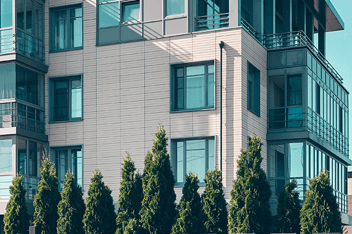Running a business means looking out for your customers and community. To keep the business coming in, you’ll want to keep people safe when they have reason to interact with you. Various protective steps can help you keep everyone in the business safe. Preventing problems should remain one of your top priorities.
Nevertheless, you will want to have help in place in case an unforeseen problem develops. Various liability insurance policies could come in handy.
Why You Need Liability Insurance
Liability insurance protects businesses if they harm third parties or their property. They can help the business repay third parties, as well as respond to legal suits that might result. Every business, by nature, carries the risk of harming others in multiple situations. Therefore, businesses usually need various types of liability coverage, that’s for certain.
Remember, you’ll only want to use liability coverage in unavoidable situations. So, how can you prevent those accidents as much as possible? Think about the commercial situations in which liabilities might develop. Workers comp papers
Liability Coverage for Driving
Many businesses need to drive to conduct business. Some might make deliveries. Others might offer transport services. Still more might provide company-owned vehicles for employee use. In cases like these, most businesses need commercial auto insurance.
Liability insurance is usually a mandatory part of commercial car coverage. Indeed, most states require this coverage of all drivers. It can help drivers found at-fault in accidents cover injuries or damage they cause to other parties. Ensure that the liability coverage your carry has appropriate limits for your needs.
Company vehicle owners should also place a heavy reliance on driver safety. Safe driving, after all, might prevent accidents and other damage.
- Only hire and use drivers who have clean records and proper operating qualifications.
- Require all drivers to observe the rules of the road. Consider disciplinary actions for safety violations like speeding tickets or mobile device use.
- Some companies now use tracking devices on their company vehicles. These devices might track speed and location of vehicles. Using them can better ensure that drivers follow safety rules.
Indoor Safety
Perhaps the most important place to see to safety is within your own buildings. You should keep the safety needs of employees and customers in mind. A general liability policy might help in case of customer injuries or other damage. Workers’ comp, another type of insurance, might protect employees who get hurt or sick at work. - Make liberal use of warning notices and workplace safety or OSHA guidelines. Protective items might include everything from wet-floor signs to off-limits areas for customers.
- One of the most common types of workplace injuries is slip-and-fall claims. These might arise in places like staircases or bathrooms, for various reasons. Periodically take a walk through the business. Look for signs of trouble, such as leaks, broken steps or items crowding hallways.
- Inspect all equipment, from computers to coffee pots. Make sure every visitor and employees has instructions on proper operations. If you become aware of problems, immediately shut down the equipment.
Outdoor Safety
People don’t just stand injury risks indoors. They face problems outside the property as well. If you own your parking lots, your commercial liability coverage might cover you. However, you also have to see to the upkeep of these items, to prevent neglect. - Your parking lot will remain a high risk area. Make sure you mark the area with proper signage. These might include handicapped parking areas, lane markings and warning signs about crosswalks or sight hazards.
- Keep cracks and potholes to a minimum. These might prevent falls or damage to vehicles.
- Ensure that you provide safe access points. Fix broken steps, and ensure you have ramps or other access points for handicapped individuals, as necessary.
- In the event of weather hazards, ensure the safety of the outdoor property. De-ice or re-direct water as necessary. Clean up any resulting debris.
Cyber Safety
Not all threats to customers come from physical hazards. Given the amount of sensitive information that businesses store on computer systems, data losses could impact security. Lost information, stolen identities and other problems might plague customers. As a result the company might bear responsibility.
A cyber liability policy might help your repair and prevent such damage in the future. However, your data security services should remain among your business’s top priorities. - All hardware and software should have backup and cleaning services provided by IT professionals.
- Companies should only use secure encryption, anti-theft and data protection services. Replace and update these items as necessary.
- Employees must have training to access secure data. They should know how to safeguard this information under all circumstances. Privacy rules, password requirements or multi-step identity verification might all be part of your safety plans.
This is not an exhaustive list of ways to keep your business safe from liability hazards. Still, each point can help you protect your customers and employees. Stay on top of your business’s safety and security commitments at all times. When problems do develop, consult your liability policy. Then, see what you can do to prevent the issue from happening again.


